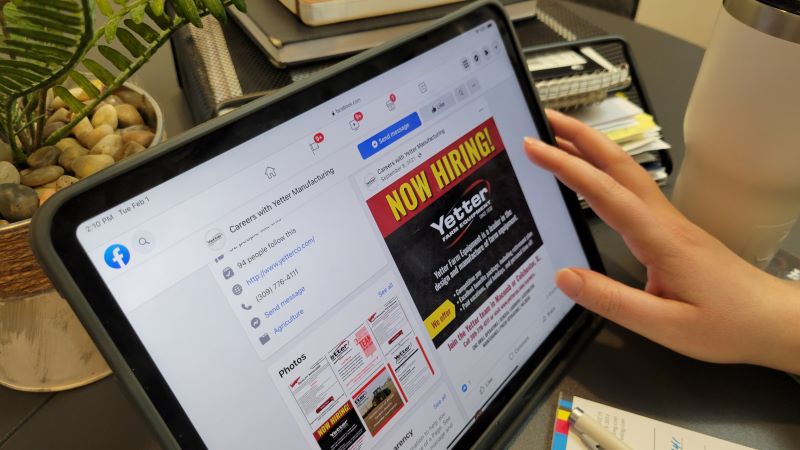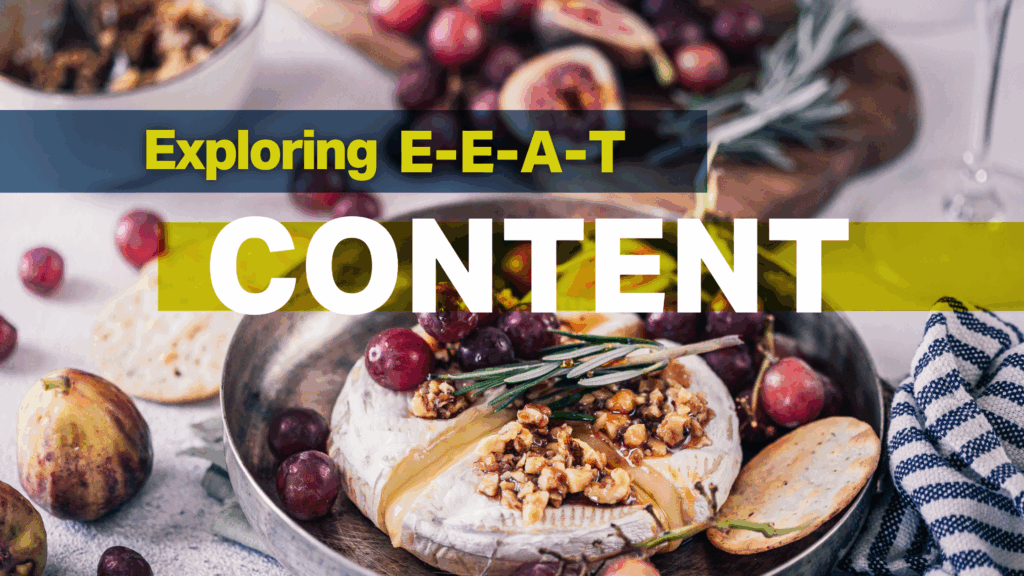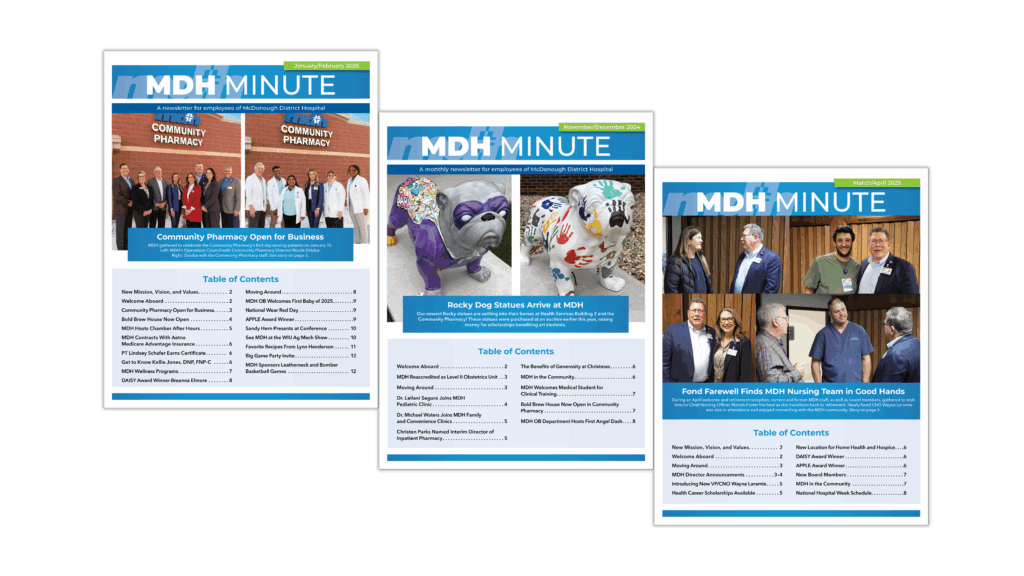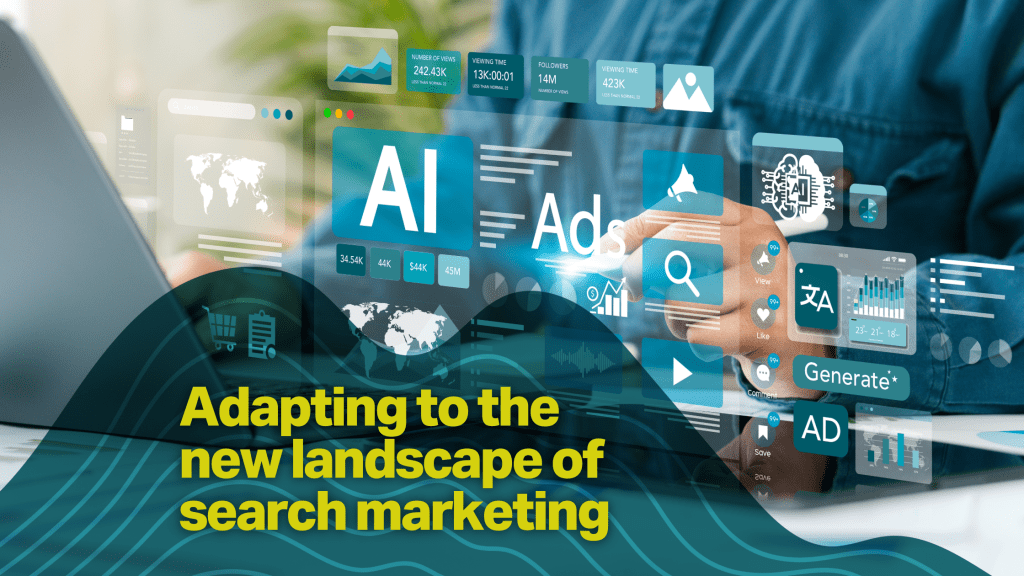by Sarah Purdy, WP editor and online content specialist, and Vera Snodgrass, WP writing intern
When you’re planning to advertise on social media, one of the first platforms that comes to mind is Facebook. With Facebook, you can create eye-catching ad campaigns for your audience’s newsfeeds, as well as other Meta platforms like Instagram, Messenger, and the Audience Network. You have the ability to fine-tune your audience, experiment with different kinds of ads, set a personalized budget, and analyze your campaign’s performance to make sure you’re getting a return on your investment.
That all sounds great, right? Yes, a well-run Facebook ad campaign can be a truly valuable tool for any business. But it’s easy to get overwhelmed if you’re a first-time social advertiser or if you’ve been out of the game for a while. Never fear—in this guide, we’ll take you through the basics of creating a Facebook ad campaign.
Boosting a post vs. running an ad campaign
Before you get started, you should ask yourself a question: Do you need a full ad campaign, or do you just want to boost a particular post?
Boosting is when you pay to increase the visibility of a normal post from your Facebook page. You set a simple target audience, like a geographic area and folks in a certain age range. Then Facebook prioritizes showing your post in that audience’s newsfeed. That’s a good strategy if you want to get the word out about something specific, like an event, or you just want to build better brand awareness.
Boosting isn’t necessarily cheaper or more expensive than running an ad campaign. To boost or not to boost comes down to what you want to get out of the experience. If you want a finer target audience, greater creative control, or to expand your reach across platforms, then you need Facebook ads.
Setting your ad objective
The first step in creating a Facebook ad campaign is to select your objective. What is the purpose of your ads? What results do you want to see? Facebook has three objective categories to choose from, along with several subcategories:
- Awareness: Getting your name out there and reaching as many people as you can. You’re focused on brand awareness, not selling a product.
- Consideration: Having customers engage with your content. That could mean getting people to watch your video, send a message, request information, install an app, or share your content with others.
- Conversion: Getting your customers interested in buying from you, usually with the end goal of moving the customer to your website.
For a full list with all the subcategories, check out Facebook’s objectives breakdown.
Establishing your audience
After selecting your objective, you will need to establish your audience, or the people you want to see your ads. You can target your audience several ways, starting with basic demographics:
- Age
- Gender
- Location
- Language
- Interests
- And more
You can also target for customer behavior and—if you’ve run an ad on Facebook before—filter your audience by how they’ve engaged with you in the past. However, when you’re just starting to build your audience, it’s best to cast a wide net. Not so wide that you’re trying to catch everyone, but wide enough that you’ll see some results and engagement.
It’s worth noting that as your ad runs over time, Facebook can build you a lookalike audience. Lookalikes engage in the same behaviors as your current audience but have less in common demographically. For example, if you’re initially targeting young women who are interested in pet hygiene, your lookalike audience might be the elderly who are looking for the same products and services. This strategy can help you branch out and reach new people who are likely to engage with you.
It’s also important to note that the privacy of your audience is paramount. You will not be given exact buyer profiles. Facebook passes data through a sort of information scrambler before it gets to you. You still get important data you need to make decisions about your advertising—age, gender, clicks, etc.—while customers’ privacy is protected.
Choosing your Meta platforms
You’ll need to decide where your ads are going. Are they staying on Facebook, or do you want to cover more Meta platforms (like Instagram)?
You’ll need to choose the platforms where your ads will be most profitable. For example, the Meta Audience Network serves ads in mobile sites and apps. Ads that require a lot of reading will be less successful on this platform than they will be in a Facebook newsfeed.
You’ll need to keep in mind that some ad formats will not work on some platforms. For example, some platforms allow longer video ads than others.
Establishing your budget
Facebook offers several budgeting strategies—you’ll need to pick the one that best fits your needs.
To start off, you’ll set a cap (or a spending limit) for your campaign. There are two approaches:
- Daily budget: You set an average daily spend for the course of a week.
- Lifetime budget: You set an overall budget for the time you plan to have your campaign running. (This route is ideal if you don’t want to spend over a certain amount.)
Next, you’ll set a bid strategy for Facebook’s auction system. Simply stated, the auction is a calculation that Facebook runs for every user. Your ad is in the auction, trying to win a spot on a person’s feed. There are three parts to winning the auction: your bid, how likely this person is to interact with your ad based on their previous behavior, and the overall quality of your ad. Here are your bidding options:
- Spend-based bidding: Your focus is on spending your entire budget and bringing in the most results or the highest-value conversions (like selling an expensive product).
- Goal-based bidding: You have a target cost or return on your ad spend that you want to achieve.
- Manual bidding: You want to manually set your maximum bid in the auction, rather than letting Facebook do it for you. This option is for experienced advertisers.
Choosing your ad format
Finally, you’ll need to select the format of your ads:
- Single image: A classic photo is the default option.
- Video: Incorporate footage, music, animation, and more. Videos are one of the most-used ad formats.
- Stories: 15 seconds of images or videos.
- Messenger: Pop-ups that can be shared on Messenger.
- Carousel: Spotlight a collection of up to 10 photos or videos that customers scroll through. Carousels are another very popular format.
- Slideshow: The image carousel transforms into a video-like ad with movement, sound, and text.
- Collection: Customers can browse a mini catalog and tap to learn more about a specific product.
- Playable: An interactive preview of your app that customers can test before they download.
Measuring results
Now that your ad campaign is built, all that’s left is to let it run and start gathering performance data. Don’t be afraid to tweak things like the time of day your ad runs or who your audience is to optimize your results. As you build a history with Facebook ads, your campaigns will only get more refined.
This was a quick overview—there’s a lot more that can be done in the world of Facebook advertising! If you want help creating a new campaign, managing an ongoing one, or creating content for your ads, contact the Write Place at 641-628-8398 or send an email to hello@thewriteplace.biz.
Sources:
- Facebook Ads: Social Media Advertising for Your Business (Meta for Business)
- Facebook Ad Auction Explained | How to Beat the Competition and Get More Results at Lower Costs (Evelyn Weiss)
- Facebook Ads vs. Boosting Posts: Which Is Right for Your Business? (smartbugmedia.com)
- 3 Ways to Build the Perfect Audience for Facebook Ads Targeting (Tweak Your Biz)
- Facebook Advertising Cost: Everything You Need to Optimize your ROI (sproutsocial.com)
- About Bid Strategies (Meta Business Help Center)
- About Ad Auctions (Meta Business Help Center)
- Choosing Facebook Ad Campaign Objectives and Marketing Goals (Meta for Business)
- About Meta Ads Placements (Meta Business Help Center)
- Facebook Ad Formats for Different Goals (Meta for Business)
- View and Analyze Ads Results in Meta Ads Manager (Meta Business Help Center)



